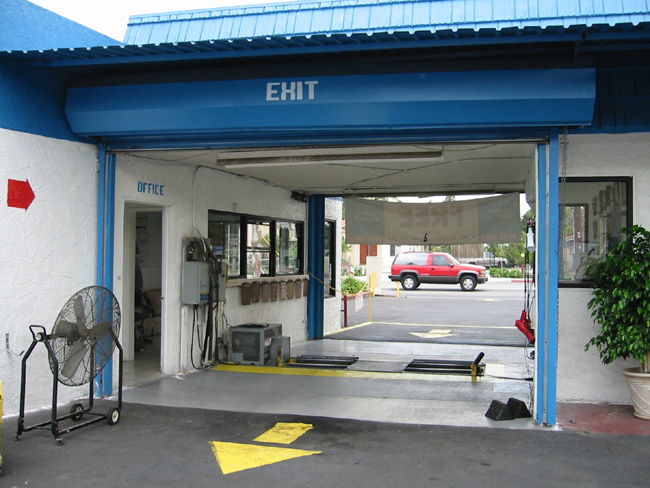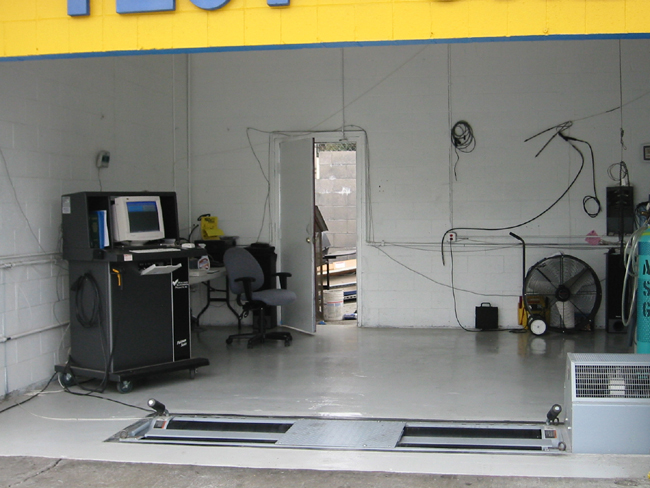You open the letter from the DMV and find that you vehicle needs a smog test before it can be registered. A bit of trepidation sets because your vehicle is getting on in years and you are concerned that it may not pass. However, you can increase the chances of passing by doing a bit of homework before you take it to be “smogged.” Here are a few tips that will help. Most are provided for California drivers, but should work in any locale since arguably California has the toughest emission standards, and thus, tests in the nation.

First, make sure all the emissions equipment originally installed on your vehicle is still there and working properly. Missing equipment is usually not a problem, unless you have done major engine repairs recently. The most common items that are missing or have been disabled are the EGR (exhaust gas recirculation valve), catalytic converter, air pump, or heated air intake pipes. Make sure the CHECK ENGINE light or any other dashboard warning lights such as the EGR light are NOT glowing. This is an automatic fail, so find out the reason and get it corrected. One common reason for a CHECK ENGINE light is a bad or missing gasoline filler cap. Replace the cap with a new one if you suspect it to be a faulty. A cap test is often part of the emissions test.
If the engine is not running smoothly, misfiring or gulping large amounts of fuel because of bad sparkplugs or wires, vacuum leaks, incorrect ignition timing or malfunctioning fuel injection system it probably will not pass. If it has been awhile since you had a tune-up, invest in one. Not only will it increase your chances of passing, you will also have a better performing engine that gets more MPGs. Also the technician can check for faulty or missing emissions equipment and tweak the engine to assure it meets emission standards. As one example, a faulty thermostat can cause the engine to operate too cool and this in turn causes too much fuel to be injected so you fail the emissions test.
Change the oil and filter before the test. Very dirty engine oil can cause a failure because the oil fumes are drawn into the engine and some may pass out the exhaust. Also, replace dirty air and fuel filters. A dirty air filter can cause CO emissions to be too high. Also, today’s computerized engines require every component to be working properly for best performance and minimum emissions. Prior to the test, fill the tank with the grade of fuel recommended in the owner's manual.
If your vehicle is running fine, but you mostly drive it on short trips, give it an “Italian Tuneup.” This means some serious highway driving at high, but still legal speeds. Depending upon the condition of your vehicle, this could be a few or many miles. Driving at higher speeds will clean out sparkplugs, clear carbon off oxygen sensors, and burn residue out of the catalytic converter. Drive at varying speeds on freeways, surface streets, up hills and with some spirited acceleration.
It is important that the engine is warmed up to it normal operating temperature prior to the smog test. This will assure that the oxygen sensor is hot and sending signals, and that the catalytic converter is hot enough to do its job properly. If the engine has been idling for a few minutes the converter can cool down and stop functioning properly. The test should be completed within 15 minutes of your arrival so the engine can quickly return to normal operating temperature.

If the smog test is done dynamically, that is on a dynamometer, tires can play a factor in passing or failing. Thus, insure your tires are in good condition and properly inflated. Also if you changed the size of the tires from the original specifications this may be a problem. That’s because the dynamometer test equipment is calibrated to the "stock" tire size. Over- or under-sized tires will alter the speed calculations performed by the test equipment and may prevent your vehicle from going through the test since the machine won't sense the correct speed for your vehicle's tire size. If your vehicle is loaded with lots of stuff, remove it. The dynamometer weighs your vehicle before the test, and if the vehicle is heavier than it should be, the weight will make it harder to pass.
What about those cans of additives on auto part stores’ shelves touting they will get your vehicle to pass? Do they work? Maybe. However, remember you should not try fool the test equipment. Afterall, you too are breathing the dirty emissions from a polluting vehicle.
Finally, if you vehicle fails its smog test, its repair may be covered under the manufacturer’s warranty even though the vehicle’s other warrantees have expired. Emission equipment warrantees are often significantly longer. So check your owner’s manual or consult the dealer.




